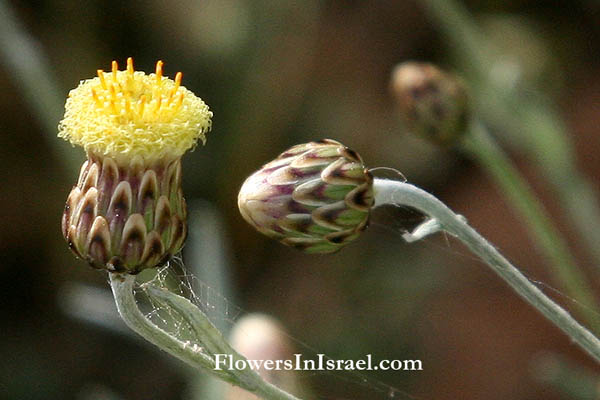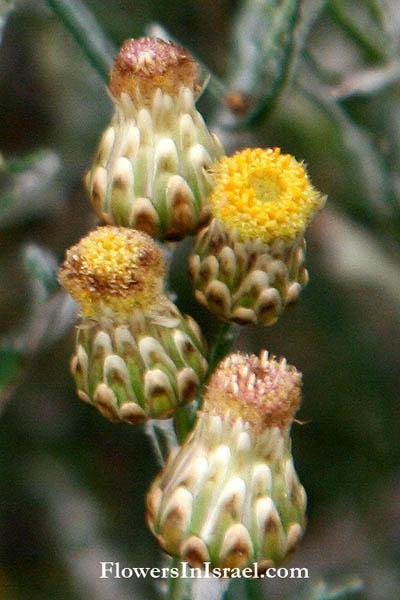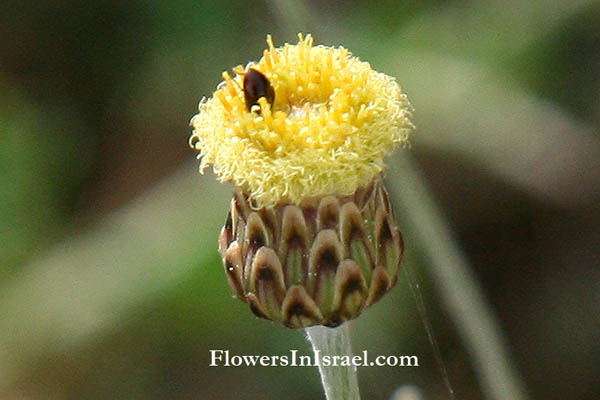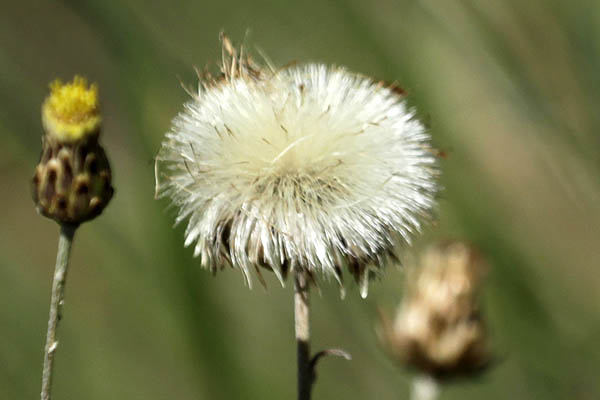Hebrew: צמרנית הסלעים, Arabic: هحدق،حيدق
| Scientific name: | Phagnalon rupestre (L.) DC. | |
| Synonym name: | Phagnalon spathulatumCass. | |
| Common name: | African fleabane | |
| Hebrew name: | צמרנית הסלעים | |
| Arabic name: | قذى ,هحدق،حيدق | |
| Family: | Compositae / Asteraceae, Sunflower Family, משפחת המורכבים |

|
| Life form: | Chamaephyte, semi-shrub | |
| Stems: | Stems bearing large winterleaves and develop | |
| Leaves: | Alternate, entire; small summer leaves with denser white cover developing at the axile of relatively large winter leaves | |
| Flowers: | Yellow | |
| Fruits / pods: | Achenes (= one-seeded fruits); seeds are dispersed by rain (Ombrohydrochory); seeds are retained on the mother plant after they mature, and their dispersal is triggered by rain. | |
| Flowering Period: | March, April, May, June | |
| Habitat: | Hard rock outcrops | |
| Distribution: | Mediterranean Woodlands and Shrublands, Semi-steppe shrublands, Shrub-steppes, Deserts and extreme deserts, Montane vegetation of Mt. Hermon | |
| Chorotype: | Med - Irano-Turanian | |
| Summer shedding: | Perennating |

Derivation of the botanical name: Phagnalon; the generic name Phagnalon was validated by Cassini (1819). rupestre, rupes, a rock; estris, djective suffix for nouns: origin or habitat; found near rocks. spathulatum, shaped like a spatula. The Hebrew name: צמרנית, zamranit, Phagnalon, formed from צמר, zemer, wool.



Location: Netanya, Sergeants Grove |